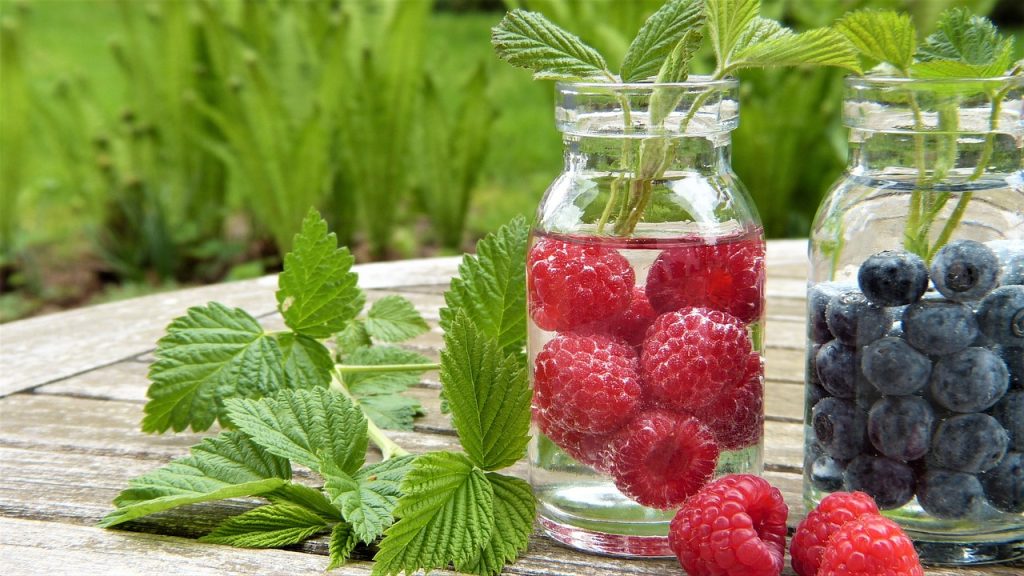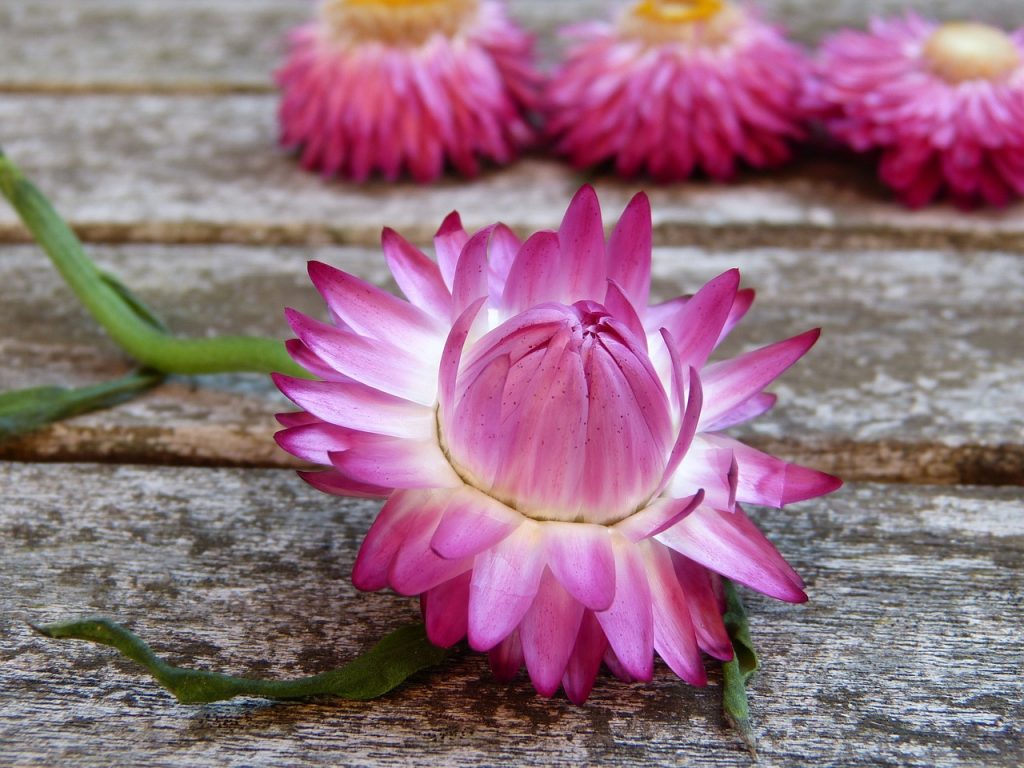Living in the UK, you may find yourself wondering how to shield your beloved garden from the harsh wrath of winter. As the chilly winds blow and the temperatures plummet, it’s only natural to worry about the impact on your beautifully nurtured plants and cherished flowers. However, fear not! Here, you will discover practical tips and tricks that will help you safeguard your garden, allowing it to withstand the brutality of the season and bloom again in all its glory come springtime. So, let’s explore some effective ways to protect your garden from the unforgiving grip of UK winters.
Table of Contents
ToggleChoosing Winter-Resistant Plant Varieties
When it comes to maintaining a beautiful and thriving garden during harsh UK winters, selecting winter-resistant plant varieties is key. These plants are designed to withstand colder temperatures and are better equipped to survive unfavorable winter conditions. When researching winter-resistant plants, it’s important to consider factors such as hardiness zones, plant growth habits, and bloom times. By carefully selecting winter-resistant plant varieties, you can ensure that your garden remains vibrant and colorful even in the coldest months.
Researching Winter-Resistant Plants
Before making any decisions, it’s essential to conduct thorough research on winter-resistant plants suitable for your specific region in the UK. Consult gardening books, plant databases, and local gardening experts to gather information on plant varieties that have demonstrated resilience in your area. Consider factors such as their ability to tolerate freezing temperatures, resistance to diseases common during winter, and optimal planting times. Prioritize plants that have consistently proven their resilience and ability to thrive in similar climates to yours.
Selecting Frost-Tolerant Varieties
One crucial aspect to consider when choosing winter-resistant plants is their ability to tolerate frost. Frost-tolerant varieties are resilient and can withstand freezing temperatures without significant damage. Look for plants that have been specifically bred or selected for their frost tolerance. These varieties are more likely to survive sudden drops in temperature and frost events that are common during the winter months in the UK. By incorporating frost-tolerant plants into your garden, you can minimize the risk of plant loss and promote long-term success.
Considering Evergreen Options
In addition to selecting winter-resistant plant varieties, consider incorporating evergreen options into your garden. Evergreen plants retain their foliage throughout the year, offering year-round visual interest and protection to your garden. Their green foliage acts as a natural barrier against harsh winter winds and provides a sense of life and vibrancy during the colder months. Evergreen trees, shrubs, and ground cover plants are excellent choices for creating a winter garden that remains visually appealing, even when other plants have gone dormant.
Preparing the Soil
Preparing the soil before winter sets in is essential for ensuring that your plants have a healthy foundation to withstand the cold weather. By following these soil preparation tips, you can increase the resilience of your garden and provide the best conditions for plant growth and survival.
Clearing Debris and Diseased Plants
Before winter arrives, take the time to clear any debris, fallen leaves, or dead plants from your garden beds. Removing these materials minimizes the risk of pests and diseases lingering in your garden during the winter months. Pay close attention to any plants showing signs of disease or infestation and promptly remove and dispose of them properly. By clearing away debris and diseased plants, you help create a clean and healthy environment that promotes plant growth and minimizes the spread of pests and diseases.
Amending the Soil with Organic Matter
Incorporating organic matter into the soil is an effective way to improve its quality and fertility. Before winter, consider adding well-rotted compost, aged manure, or leaf mold to your garden beds. These organic materials add valuable nutrients to the soil, improve its structure, and enhance its water-holding capacity. Amending the soil with organic matter also provides insulation to plant roots, protecting them from freezing temperatures. Work the organic matter into the soil, ensuring it is evenly distributed and mixed thoroughly. This will give your plants the best chance of survival and growth during the winter months.
Improving Drainage
Proper drainage is crucial for plant health, especially during the winter when excess moisture can be problematic. Poor drainage can lead to waterlogged soil, which can cause root rot and other issues. To improve drainage in your garden beds, consider incorporating organic matter, such as compost or well-rotted manure, into the soil. This helps to create a looser, well-draining soil structure. Alternatively, you can also add a layer of gravel or pebbles to the bottom of garden beds or containers to facilitate water drainage. By improving drainage, you can prevent water-related problems and ensure the overall health of your plants throughout the winter season.
Mulching and Insulating
Mulching and insulating your garden can provide an additional layer of protection to your plants, shielding them from the cold and harsh winter weather conditions. Implementing these methods can help maintain a stable soil temperature and prevent frost damage. Here are some effective ways to mulch and insulate your garden:
Applying Mulch to Protect Root Systems
Applying a layer of organic mulch around the base of your plants can protect their root systems from freezing temperatures. Mulch acts as an insulating blanket, keeping the soil temperature more stable and preventing frost from penetrating the ground and damaging the roots. Use materials such as straw, wood chips, or shredded leaves to create a mulch layer around your plants. Ensure the mulch is applied a few inches thick, but avoid piling it up against the stems or trunks of your plants to prevent rot or disease.
Using Horticultural Fleece or Row Covers
Horticultural fleece or row covers are lightweight fabrics designed to protect plants from frost and cold winds. These covers can be placed directly over your plants, and they allow air, light, and moisture to penetrate while creating a barrier against harsh conditions. Secure the covers firmly to prevent them from being blown away by strong winds. Horticultural fleece and row covers are available in various sizes and can be easily removed and reused as needed.
Creating Windbreaks
Creating windbreaks in your garden can help shield your plants from frigid winter winds that can cause damage and dehydration. Consider planting evergreen shrubs or erecting barriers, such as fences or trellises, in strategic locations to deflect or break the force of the wind. This not only protects your plants but also creates a more comfortable microclimate within your garden. Windbreaks are particularly beneficial for delicate or young plants that may be more susceptible to damage.
Providing Adequate Watering
Proper watering practices are crucial during the winter months to ensure plant survival and prevent stress. While it may seem counterintuitive, plants still require water even when the temperatures drop. However, it’s important to adjust your watering routine to accommodate the specific needs of your plants during winter.
Watering Plants Before Freezing Temperatures
Before freezing temperatures set in, it’s important to provide your plants with a thorough watering. This helps to ensure that they are adequately hydrated before entering the dormant period. Water the soil around the base of your plants deeply, allowing the water to penetrate the root zone. This gives your plants a reserve of moisture to sustain them during the winter when natural rainfall may be limited.
Avoiding Overwatering During Winter
While watering is important, it’s equally important to avoid overwatering your plants during the winter. Overwatering can lead to waterlogged soil, which can cause root rot and other plant health issues. Before watering your plants, check the soil moisture level by feeling the top few inches of soil. Only water if the soil feels dry to the touch. It’s better to underwater than to overwater during the winter months. Remember, plants generally require less water during their dormant period.
Using Irrigation Systems With Timers
To ensure consistent and appropriate watering during the winter months, consider installing irrigation systems equipped with timers. Timed irrigation systems allow you to control the frequency and duration of watering, ensuring that your plants receive the right amount of moisture without the risk of overwatering. These systems can be particularly helpful if you have a large garden or if you plan to be away for an extended period.
Building Protective Structures
Building protective structures can provide an extra layer of shelter and insulation for your plants. With the right structures in place, you can extend your growing season and create optimal conditions for your plants to thrive. Here are some structures you can consider building to protect your garden during harsh UK winters:
Constructing a Greenhouse
A greenhouse is an excellent investment for any gardener, as it provides a controlled environment for your plants throughout the year. With a greenhouse, you can create the ideal conditions for your plants to grow, even during the coldest winter months. Greenhouses come in various sizes and styles, from small portable options to larger structures that can accommodate a vast array of plants. When constructing or purchasing a greenhouse, consider factors such as insulation, ventilation, and heating options to ensure the best environment for your plants.
Installing Cold Frames or Cloches
Cold frames and cloches are smaller structures that act as mini-greenhouses, providing protection and insulation to individual plants or small garden bed areas. These structures are typically made of transparent materials such as glass or plastic and are placed directly over plants, allowing sunlight to penetrate while capturing heat. Cold frames and cloches are ideal for protecting delicate plants, extending their growing season, and encouraging early spring growth.
Building a Poly Tunnel
A poly tunnel, also known as a hoop house, is a cost-effective alternative to a greenhouse. It consists of a series of plastic or polyethylene hoops attached to a frame, covered with a durable plastic sheet. Poly tunnels create a warmer microclimate by trapping heat and protecting plants from harsh winter weather. They are particularly useful in areas with strong winds, as they can be anchored securely to prevent damage. Poly tunnels are available in various sizes and can be customized to fit your specific garden requirements.
Pruning and Trimming Techniques
Proper pruning and trimming techniques not only help maintain the overall health and shape of your plants but also play a crucial role in preparing them for winter. By following these techniques, you can promote stronger growth, reduce the risk of disease, and enhance the ability of your plants to withstand harsh winter conditions.
Pruning Perennials and Ornamental Grasses
Before winter arrives, prune perennial plants and ornamental grasses to remove any dead or diseased foliage. Cut back the stems to ground level or just above, depending on the specific plant’s requirements. This not only improves the appearance of your garden but also prevents decaying plant material from harboring pests or diseases during winter. Additionally, pruning allows the plant to focus its energy on root development and strengthens its ability to endure the colder months.
Trimming Hedges and Shrubs
Trimming hedges and shrubs is essential to maintain their shape, encourage dense growth, and alleviate the risk of snow or ice damage. Trim your hedges and shrubs in late autumn or early winter before the first frost. However, be sure to check the specific requirements of each plant, as some may prefer pruning in the spring. Remove any dead or diseased branches, and lightly shape the plants to maintain an aesthetically pleasing appearance. By regularly trimming your hedges and shrubs, you not only protect them from winter damage but also contribute to their overall health and longevity.
Thin out Crowded Plantings
Over time, it’s common for plants to become crowded, with too many stems competing for space and resources. Thinning out crowded plantings can prevent the development of weak, leggy growth and improve air circulation within the plant canopy, reducing the risk of diseases. Use pruning shears or secateurs to carefully remove excess stems or branches, focusing on maintaining a balanced and open structure. Thinning out crowded plantings allows the remaining healthy stems to receive adequate sunlight, water, and nutrients, enhancing their ability to withstand the challenges of winter.
Pest and Disease Control
Protecting your garden from pests and diseases is vital throughout the year, but it becomes particularly important during the winter months when plants are more vulnerable. By implementing effective pest and disease control measures, you can prevent infestations and keep your garden healthy and thriving.
Cleaning Up Garden Beds in Autumn
Cleaning up your garden beds in autumn is an essential step in pest and disease prevention. Remove any fallen leaves, plant debris, or decaying organic matter from your garden to eliminate potential hiding spots for pests and disease-causing organisms. Dispose of these materials properly to prevent the spread of pests and diseases to other parts of your garden.
Inspecting Plants for Disease or Pests
Regularly inspect your plants for signs of disease or pest infestations. Look for symptoms such as spots on leaves, wilting, discoloration, or visible pests. Early detection is crucial in preventing the spread of diseases or controlling pest populations. If you notice any concerning signs, consult gardening resources or seek advice from a professional to identify the issue and implement appropriate control measures.
Using Organic Pest Control Methods
Utilizing organic pest control methods is not only environmentally friendly but also safe for your plants and beneficial insects. Consider implementing natural pest deterrents, such as companion planting, physical barriers, or homemade organic pest sprays. Introducing beneficial insects, like ladybugs or lacewings, can also help control pest populations naturally. Avoid using chemical pesticides, especially during the winter months, as they can harm beneficial organisms and disrupt the ecological balance of your garden.
Protecting Patio and Container Plants
Patio and container plants require special attention during the winter months, as they have different needs compared to plants in garden beds. By following these tips, you can help protect your patio and container plants from the harsh UK winters.
Moving Containers to Sheltered Areas
When the colder weather approaches, consider moving your patio and container plants to more sheltered areas, such as a greenhouse, shed, or covered porch. These protected environments offer additional insulation and shielding from cold winds and frost. Choose areas that receive sufficient sunlight and provide the necessary space for your plants to grow. If moving your containers is not feasible, consider grouping them together and wrapping them with insulating material for added protection.
Wrapping Containers with Insulating Material
To provide additional protection to your patio and container plants, wrap the containers with insulating material. Use materials such as burlap, bubble wrap, or horticultural fleece to create a cozy layer around the containers. Secure the wrapping with string or tape, ensuring it is snug but not too tight to allow for proper airflow. Insulating the containers helps to maintain a stable soil temperature, protecting the root systems from freezing and reducing the risk of damage.
Elevating Containers to Avoid Freezing
Elevating your containers slightly off the ground can help prevent the soil from freezing and damaging the plant roots. Place small bricks, pieces of wood, or pot feet underneath the containers to create space for air circulation. This prevents the containers from sitting directly on the cold ground and allows excess moisture to drain away, reducing the risk of waterlogging and root rot. Elevating your containers also helps reduce the transfer of cold temperatures from the ground to the soil, providing an extra layer of protection.
Monitoring and Adjusting
Monitoring the condition of your plants throughout winter is crucial for identifying any signs of stress and implementing necessary adjustments to protect their health. Keep a close eye on your garden and regularly inspect your plants for any signs of damage, disease, or pest infestation. By paying attention to your plants’ needs and making appropriate adjustments, you can ensure their survival and overall well-being.
Checking Weather Updates Regularly
Stay informed about the upcoming weather conditions by checking weather updates regularly. By knowing what to expect, you can anticipate potential frost events or extreme cold spells and take preemptive action to protect your plants. Adjust your protection methods accordingly, such as covering plants with additional row covers or providing supplemental heat if necessary. Weather updates also guide your watering schedule, helping you avoid overwatering during wet periods or adjust watering frequencies during dry spells.
Adjusting Protection Methods as Needed
Winter weather can be unpredictable, and it’s essential to be prepared to adapt your protection methods accordingly. If you notice that your plants are struggling or showing signs of stress, adjust your insulation, mulching, or other protective measures. For example, if severe winds are forecasted, reinforce windbreaks or consider erecting temporary barriers to shield your plants. Regularly assess the effectiveness of your protection methods, and don’t hesitate to make changes if needed to ensure the well-being of your garden.
Inspecting Plants for Signs of Stress
Periodically inspect your plants for any signs of stress, such as wilting, leaf discoloration, or stunted growth. These can be indicators of inadequate protection or other issues that need to be addressed promptly. If you notice any plants showing signs of stress, consider providing additional insulation, adjusting watering practices, or consulting gardening resources for further guidance. By regularly monitoring and addressing signs of stress, you can prevent serious damage and maintain a healthy garden throughout the winter months.
Considering Artificial Heat Sources
In extremely harsh winter climates, providing additional heat sources can be necessary to protect your plants from freezing temperatures. While these methods may require more investment and energy, they can make a significant difference in your garden’s ability to withstand severe cold. Here are some options to consider for artificial heat sources:
Using Heat Lamps or Frost Heaters
Heat lamps or frost heaters can provide targeted warmth to specific areas or individual plants. These devices emit a controlled amount of heat that can raise the temperature within their immediate vicinity, safeguarding plants from freezing. Heat lamps or frost heaters are particularly useful for protecting potted or vulnerable plants that are more susceptible to cold damage. Ensure the devices are safely positioned to prevent any fire hazards and follow the manufacturer’s instructions for optimal use.
Employing Electric or Gas Heating Systems
Electric or gas heating systems are larger-scale solutions suitable for more extensive gardens or greenhouse environments. These systems provide a consistent and controlled heat source, maintaining an optimal temperature for your plants’ well-being. Electric heating systems include options such as electric heaters or heated propagators. Gas heating systems, such as propane or natural gas heaters, can be used in greenhouses or other outdoor structures. Depending on your needs and the size of your garden, you can choose the most appropriate electric or gas heating system for your winter protection requirements.
Installing Cold Frames with Built-in Heating
For serious gardeners or those with highly delicate plants, investing in cold frames with built-in heating capabilities can provide the ultimate protection. These structures combine the benefits of traditional cold frames with the added advantage of a heating element. Cold frames with built-in heating allow you to create a suitable microclimate for your plants, shielding them from extreme cold temperatures. These structures are available in various sizes and designs, offering customizable options to meet your specific gardening needs.
In conclusion, protecting your garden from harsh UK winters may require a combination of strategies and careful planning. By choosing winter-resistant plant varieties, preparing the soil, mulching and insulating, providing adequate watering, building protective structures, employing pruning and trimming techniques, implementing pest and disease control measures, protecting patio and container plants, monitoring and adjusting, considering artificial heat sources, you can ensure that your garden remains healthy, vibrant, and resilient throughout the winter months. With proper care and attention, you can enjoy the beauty of your garden year-round, even in the face of challenging weather conditions.









